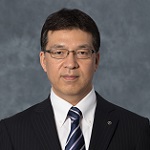
Masahisa Kawashima (Vice President, NTT Software Innovation Center, Japan)
Cloud-Native Networks for The Advancement of AI/IOT
Abstract: While Internet of Things (IoT) is expected to bring a variety of benefits to enterprises, IoT applications will also bring several big technical challenges to enterprise's IT infrastructure management. One of such challenges is security. Another one is the handling of high-density data. Such challenges will force us to reconsider the recent trend of IT centralization to cloud. This keynote will highlight some of the expected technical challenges and propose the hyperconvergence of compute, storage, and network. It will also suggest several R&D items for the realization of the new architecture.
Biography: He received a Ph.D. in electrical engineering from Waseda University, Tokyo, in 1994 and an M.Sc. in technology management from MIT's Sloan School of Management, USA, in 2002. Dr. Kawashima is the head of NTT Software Innovation Center. He has been engaged in technology and business development at NTT since joining the organization in 1994. With his enthusiasm for technology strategies, he has accomplished several initiatives to update NTT's business operations in line with new technology trends. He played a leading role in the organization of the NTT Open Source Software Center in 2006, the strategic Wi-Fi service renewal for NTT WEST in 2011, and the release of the NFV-enabled SDWAN service platform called CLOUDWAN for NTT's global businesses in 2017.

Larry Peterson (CTO, Open Networking Foundation, USA)
CORD: A Multi-Access Edge Cloud
Abstract: CORD is a multi-access edge cloud, where by “multi-access edge” we mean CORD can be configured to support one or more access technologies (e.g., PON, RAN) and associated telco functions (e.g., BNG, EPC), and by “cloud” we mean that CORD hosts these and other scalable services running on virtualizing commodity hardware. What makes CORD unique is how it supports both Access-as-a-Service and Software-as-a-Service with a single unified architecture, making it an ideal platform for the emerging edge cloud.
This talk gives an overview of the open source ecosystem helping to build and deploy CORD, with a focus on the challenges that make the edge unique and the innovations CORD adopts to address those challenges. This includes a description of XOS, a model-based framework for specifying and operating an extensible platform like CORD.
Biography: Larry Peterson is the CTO of the Open Networking Foundation (ONF) and the Robert E. Kahn Professor of Computer Science, Emeritus at Princeton University. He is a co-author of the best selling networking textbook "Computer Networks: A Systems Approach," and has been the technical lead on several Internet-scale distributed systems, including the widely used PlanetLab and MeasurementLab platforms, and the CoBlitz CDN (now commercially licensed by Akamai). He is currently working on the CORD access edge cloud, and leads CORD's Tech Steering Team. Peterson is a member of the National Academy of Engineering, a Fellow of the ACM and the IEEE, the 2010 recipient of the IEEE Kobayashi Computer and Communication Award, and the 2013 recipient of the ACM SIGCOMM Award. He received his Ph.D. degree from Purdue University in 1985.
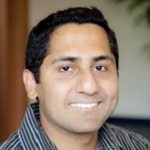
Abhimanyu Gosain (Technical Program Director, Northeastern University, USA)
Platforms for Advanced Wireless Research - Understanding the interplay between radio, cloud and networking in future mobile networks
Abstract:
This talk introduces PAWR, a $100M US public-private research partnership to support creation of four city-scale experimental platforms for advancing fundamental wireless research. This program plans to blend cutting-edge wireless and cloud innovations with a large scale geographical community. We share our vision of creating a network platform architecture, which is extremely agile, dynamic, cost-effective, adaptable, sliceable and extensible, giving unprecedented programmability and control to a broad set of researchers. The talk also details the first two Platforms addressing mmWave and Massive MIMO radio technologies and their requirements from a cloud infrastructure perspective.
We will present an emerging edge/core/network computing paradigm supported by PAWR, where heterogeneous edge devices, new air interfaces and multi-tier cloud architectures collaborate to sense, process, analyze data and create many novel applications.
Biography: Abhimanyu (Manu) Gosain is a Technical Program Director at Northeastern University. In this role, he is in charge of setting strategic goals and the research agenda for a $100 million public-private partnership for the Platforms for Advanced Wireless Research (PAWR) program. His numerous professional publications and experience exemplify use-inspired basic research in the field of networking technologies such as LTE, dispersed computing, edge computing and Internet of Things. He has organized and participated in technical program committees, workshops and panels at premier venues such as IEEE Infocom, ACM SIGCOMM, ACM MobiCom and IEEE VTC. He was formerly the lead wireless engineer for the NSF GENI program at Raytheon BBN Technologies. He is an IEEE Senior Member. He received his M.S. degree from Tufts University and M.B.A. from Boston University with High Honors.
Distinguished Expert Panel: CloudNet towards the edge: where is the frontier?
DEP Moderator
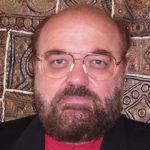

Alex Galis (Professor, University College London, UK)
Biography: Alex Galis is a Professor in Networked and Service Systems at
University College London (UCL). His current interests are on 5G
networking, software defined infrastructure and services, network and
cloud programmability and management. He has co-authored more than 290
publications in the future Internet areas: networks and services,
management, networking clouds, virtualization and programmability
including 10 research books. He has contributed to ITU-T standards on
Future Networks and 5G Networks and he has worked on IETF drafts in
Autonomic networking and network slicing. He has been a principal
investigator at UCL for a number of EU research projects with a total
UCL budget of more than 11 M£. He acted as PTC/ keynotes/ panels/
workshops co-chair of 14 IEEE conferences. He is a co-editor of IEEE
Communications Magazine Series on Telecom Software, Network
Virtualization, and Software Defined Networks, IEEE JSAC series on
Network Softwarization and Enablers and ETRI Journal published by Wiley.
He is an International Academy, Research, and Industry Association
(IARIA) Fellow. He was selected as a Vice Chair of the ITU-T SG13 Group
on Future Networking. He is involved in IEEE SDN initiative including
co-chairing of the IEEE SDN publication committee.
Acknowledgement: the CloudNet DEP preparation is partially supported by
the NECOS (Novel Enablers for Cloud Slicing) project.
Panelists
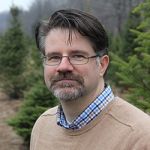

Bryan Stiekes (Technical Director, Google, USA)
Pumping the Brakes on Edge Cloud
Biography: Bryan has nearly 20 years of experience in enterprise & datacenter networking, security, and systems development. At Google, Bryan works with Google customers to evolve their networks and security models to comprehend the emerging IT ecosystem, identify and solve new and valuable problems with Google’s cloud products, and works across Google’s product engineering and management teams to develop new and meaningful services and solutions in the areas of networking, hybrid cloud, and security. Prior to joining Google, Bryan was a Fellow & Vice President at Hewlett Packard Enterprise where he was responsible for pulling together a cohesive networking strategy within HPE’s Software Defined and Cloud products group. Throughout his career with EDS, HP, and HPE Bryan had the opportunity to design and build both IT systems and products within the Enterprise Services, Public Cloud, and Networking business units.

Larry Peterson (CTO, Open Networking Foundation, USA)
Democratizing the Network Edge
Biography: Larry Peterson is the CTO of the Open Networking Foundation (ONF) and the Robert E. Kahn Professor of Computer Science, Emeritus at Princeton University. He is a co-author of the best selling networking textbook "Computer Networks: A Systems Approach," and has been the technical lead on several Internet-scale distributed systems, including the widely used PlanetLab and MeasurementLab platforms, and the CoBlitz CDN (now commercially licensed by Akamai). He is currently working on the CORD access edge cloud, and leads CORD's Tech Steering Team. Peterson is a member of the National Academy of Engineering, a Fellow of the ACM and the IEEE, the 2010 recipient of the IEEE Kobayashi Computer and Communication Award, and the 2013 recipient of the ACM SIGCOMM Award. He received his Ph.D. degree from Purdue University in 1985.

Kohei Shiomoto (Professor, Tokyo City University, Japan)
Machine Learning in Cloud and Internet
Biography: Kohei Shiomoto has been full professor at Tokyo City University since 2017, where he is engaged in research and education in computer communications. He had been engaged in R&D in computer networks over 28 years in NTT laboratories, Japan. He produced many technologies to innovate Cloud, Internet, and Mobile and successfully introduced into production systems during his carrier in industry. He published 70+ journal papers and 170+ reviewed international conference papers in the areas of the network systems, routers, network management for the Internet, mobile, and cloud computing. He published 6 RFCs in IETF. His current interests include Network Virtualization, Data-Mining for Network Management, Traffic & QoE Management. He served as associate editor for IEEE Transactions on Network and Service Management (TNSM) and the IEICE Trans. Commn., Guest editor for the IEEE Communications Magazine (ComMag) and IEEE TNSM. He also served as TPC Co-Chair for various conferences including IEEE NetSoft, IEEE Globecom/ICC CQRM symposium.
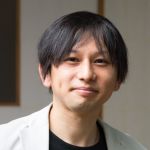
Kenta Yasukawa (CTO, SORACOM, Japan)
Cloud native network operator has a role to play regardless where the frontier is
Biography: As CTO and co-founder of SORACOM, Kenta Yasukawa leads a team that has deployed the world's leading software-defined, cloud-native telecom platform, field-tested by over 10,000 customers worldwide and designed specifically for the needs of connected devices. Before co-founding Soracom, Kenta served as a Solutions Architect with AWS and conducted research for connected homes and cars at Ericsson Research in Tokyo and Stockholm. Kenta holds a PhD in Engineering from the Tokyo Institute of Technology, with additional studies in Computer Science at Columbia University's Fu Foundation School of Engineering and Applied Science.
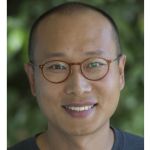
Changhoon (Chang) Kim (CTO of Applications, Barefoot Networks, USA)
The Role of Programmable Data-planes for Edge Clouds
Biography: Changhoon (Chang) Kim is CTO of Applications at Barefoot Networks and is also working actively for the P4 Language Consortium (P4.org). Before getting involved with P4.org and Barefoot, he worked at Windows Azure, Microsoft’s cloud-service division, and led engineering and research projects on the architecture, performance, and management of datacenter networks. Chang is interested in programmable networking technologies, network monitoring and diagnostics, self-configuring/running networks, and debugging and diagnosis of large-scale distributed systems. Many of his research contributions ― including INT, TPP, VL2, Seawall, EyeQ, Ananta, and SEATTLE ― are adopted in large production systems. He received a few awards, including NSDI and SIGCOMM Best Paper Awards, and Microsoft RockStar Award.
Invited Special Session 1: Initiatives of Nation-wide Open Testbed and Academic Backbone Network using SDN/NFV in Japan
Abstract: For IoT / 5G cloud networking era, the flexibility of the network dramatically increases and the usage of the network diversifies such as massive sensors data collection & analysis, real-time connected-x control, etc. The efforts of demonstration experiment and operation with scalability are important towards realizing the future network. We introduce several distinguished presentations on initiatives of nation-wide open test-beds using SDN/NFV technologies in Japan in this special session.
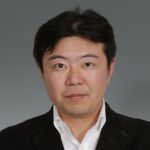
Hiroaki Harai (Director General, National Institute of Information and Communications Technology, Japan)
R&D Testbed for IoT Networking and Computing
Abstract: NICT operates "High-speed & IoT" and "Network & Distributed Cloud" testbed, which consists of 100 Gbps Nation-wide & Asian circuits, an SDN-based IoT aware verification infrastructure, a large-scale sensor/cloud infrastructure, and a large-scale emulator. The presenter introduces the testbed open for R&D projects toward practical and social implementation. Typical use case scenarios are also presented.
Biography: Hiroaki Harai received a Ph.D. degree in information and computer science from Osaka University, Osaka, Japan in 1998. After he led R&D on innovative network architecture technologies, he has been appointed to a director general at the National Institute of Information and Communications Technology, Tokyo, Japan since 2018, where he is leading R&D testbed construction and stable operation of networks and clouds. Dr. Harai was named an Outstanding Young Researcher at the 3rd IEEE ComSoc Asia-Pacific Young Researcher Award, 2007 (optical network topic). He received the 2009 Young Researcher Award from the Ministry of Education, Culture, Sports, Science and Technology (optical network topic) and a Best Paper Award in ITU Kaleidoscope Academic Conference 2014 (mobile sensor network topic).
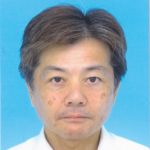
Koji Sasayama (Professor, National Institute of Informatics, Japan)
SINET5: A low-latency and high-bandwidth academic backbone network for SDN/NFV and IoT/5G cloud networking era
Abstract: SINET5 is a new 100-Gbps-based academic backbone network, which started full-scale operations in April 2016. It uses multi-protocol label switching-transport profile (MPLS-TP) systems and reconfigurable optical add-drop multiplexers (ROADMs) to create a nationwide network featuring a fully-meshed topology and has more than 50 backbone IP routers to provide a wide range of services, such as several virtual private network (VPN) services. It provides end-to-end data communications up to 100 Gbps throughput, minimized-latency, and software-defined networking (SDN)-friendly functions to researchers in every Japanese prefecture. SINET5 also gives a multi-layer, dynamically-configurable and performance-tunable platform for dynamic inter-cloud connections and network functions visualization (NFV) services.
This special session briefly reviews the multi-layer network architecture, and describes new featured services; SDN-oriented layer-2 on-demand VPN services and NFV functions, and field test results for SINET5 performance and reliability. The secured wide-area mobile service test-bed incorporated in SINET5, aiming for technological progress in IoT/5G cloud networking era, which starts in Dec. 2018, is also described.
Biography: Koji Sasayama received the B.S. and M.S. degrees in physics and the Ph.D. degree in electrical engineering from Kyoto University, in 1985, 1987, and 1996, respectively. He joined NTT Corporation in 1987. He had been engaged in research and development on telecommunication systems, especially photonic networking systems. He joined NII in 2014. He is a professor by special appointment of Research and Development Center for Academic Networks leading a team that has deployed the mobile network application on SINET.
Invited Special Session 2: Progress and Prospects of Cloud Networking Platform
Abstract: Cloud networking is undergoing a rapid change in its form, especially when edge computing becomes a reality for a variety of use cases including connected car using URLLC and IoT sensors/actuators. In this special session, we introduce several distinguished presentations with live demos using cloud services and open source software, and a mini panel discussion, especially focusing on the future progress in cloud networking.

Kenta Yasukawa (CTO, SORACOM, Japan)
Cloud Native Connectivity Platform for accelerating IoT innovations
Abstract: At a very high-level view, Internet of Things (IoT) systems consist of connected devices and intelligence on cloud. It sounds simple, however, there are often challenges in reality, for example, (1 there are gaps between the capability of constraint devices used in the field such as microcontrollers and cloud API requirements, (2 security is a major concern when connecting devices to the public Internet to access cloud API, and (3 securely managing device credentials for authentication implies high cost. In order to address these challenges and accelerate innovations, network operators have an important role to play. This presentation introduces a connectivity platform built on top of Amazon Web Services that addresses these challenges and walks through real world case studies to see how such a platform has accelerated IoT deployment and show live demos of the key features of the platform that has been field tested by more than 10,000 customers worldwide.
Biography: As CTO and co-founder of SORACOM, Kenta Yasukawa leads a team that has deployed the world's leading software-defined, cloud-native telecom platform, field-tested by over 10,000 customers worldwide and designed specifically for the needs of connected devices. Before co-founding Soracom, Kenta served as a Solutions Architect with AWS and conducted research for connected homes and cars at Ericsson Research in Tokyo and Stockholm. Kenta holds a PhD in Engineering from the Tokyo Institute of Technology, with additional studies in Computer Science at Columbia University's Fu Foundation School of Engineering and Applied Science.
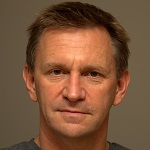
Nick McKeown (Professor, Stanford University, USA)
SDN & Programmable Switches
Abstract: Many great research ideas and new languages are emerging for programmable forwarding. In this talk, I'll take a step back and consider how we got here, why programmable forwarding planes are inevitable, why now is the right time, why they are a final frontier for SDN, and why they are here to stay.
Biography: Nick McKeown has been a Professor of Electrical Engineering and Computer Science at Stanford University since 1995. In 2005 he started the Clean Slate Program at Stanford, which with Martin Casado and Scott Shenker led to "Software Defined Networking". He co-founded Nicira (now part of VMware), Abrizio and Nemo ("Network Memory", now part of Cisco), as well as ONF, ON.Lab and P4.org. In 2013 he co-founded Barefoot Networks, where he is Chairman and Chief Scientist. His current passion is to move the network data-plane from fixed-function hardware up and into software where it belongs. He hopes this will foster much faster innovation in networking, and finally hand over the keys to those who own and operate networks, to customize them to best suit their needs.
Nick is a member of the US National Academy of Engineering (NAE), the American Academy of Arts and Sciences, and a Fellow of the Royal Academy of Engineering (UK). He received the British Computer Society Lovelace Medal (2005), the IEEE Kobayashi Computer and Communications Award (2009), the ACM Sigcomm Lifetime Achievement Award (2012), and an Honorary Doctorate from ETH (Zurich, 2014).



